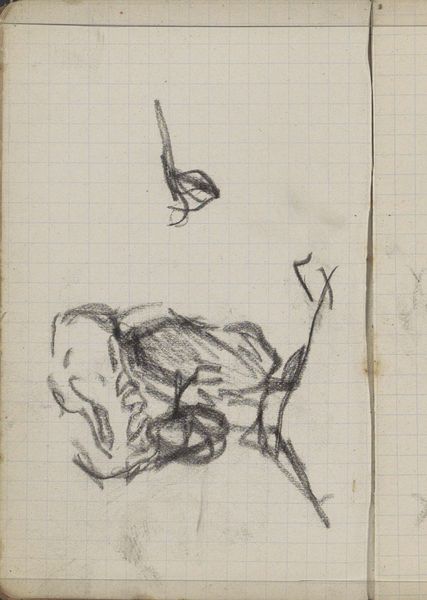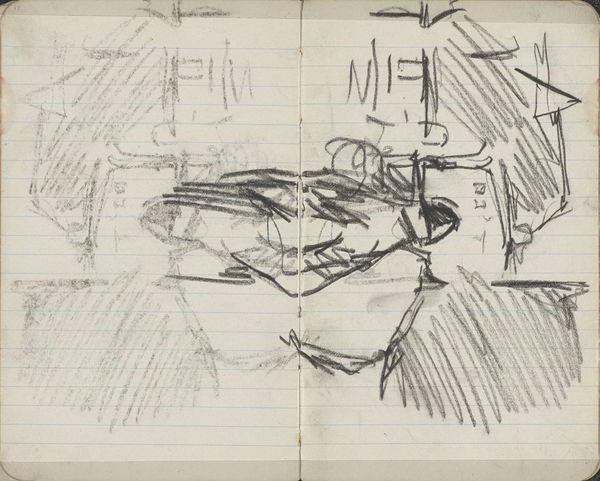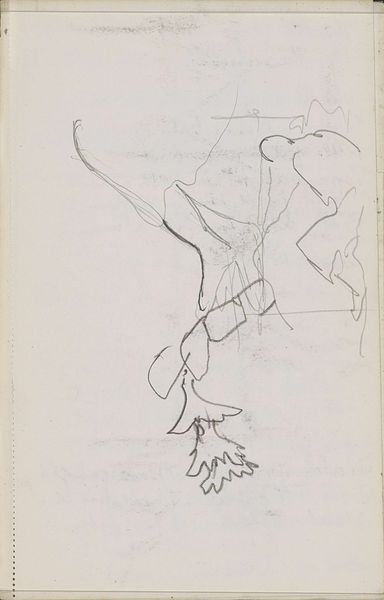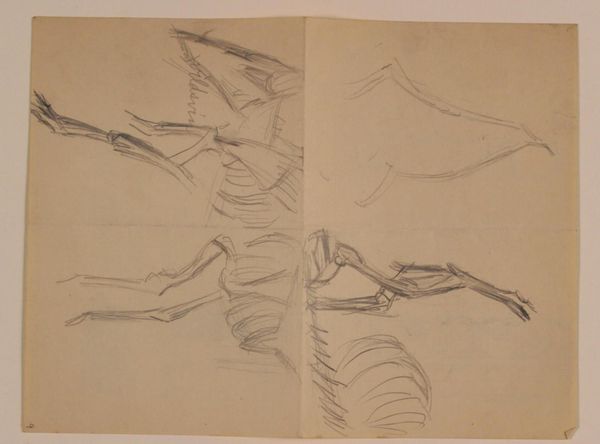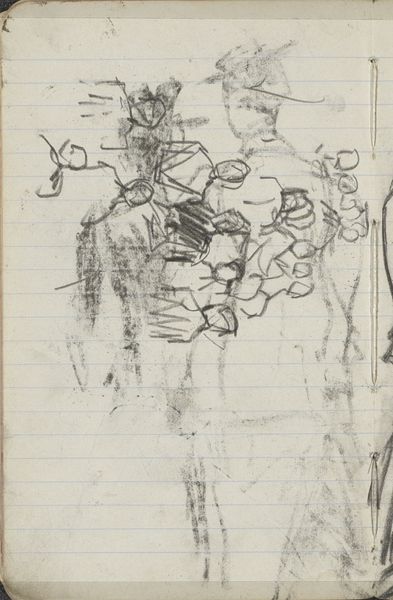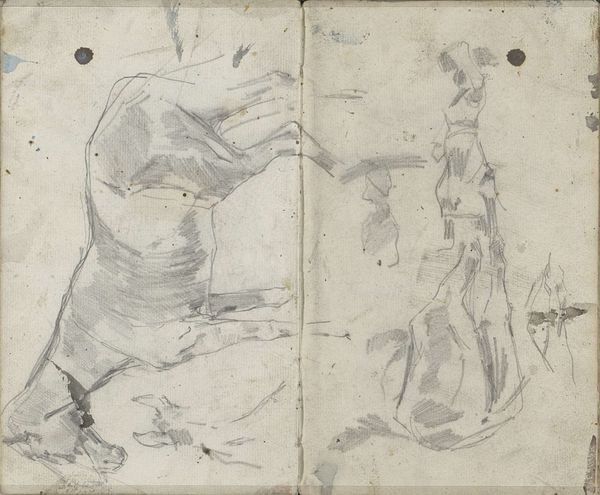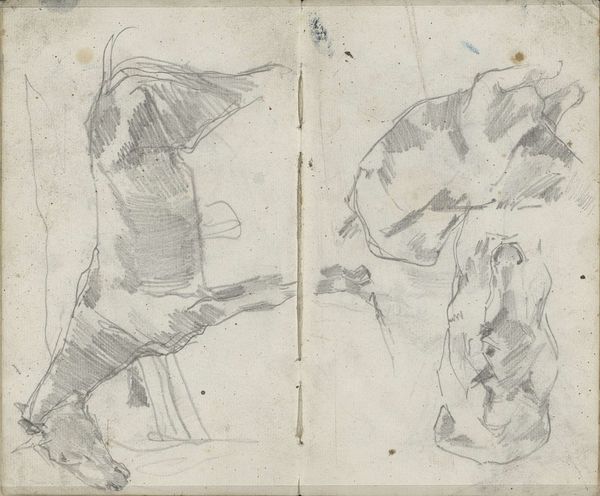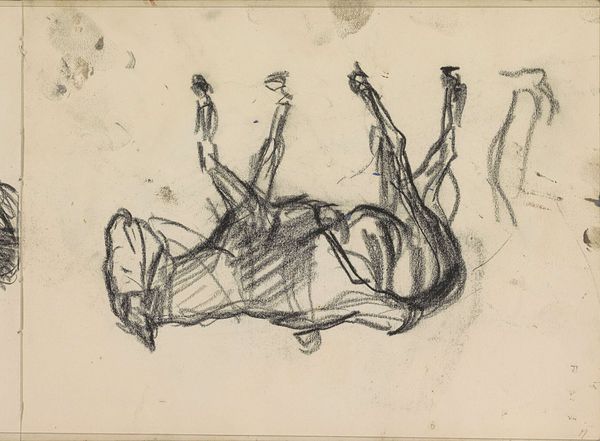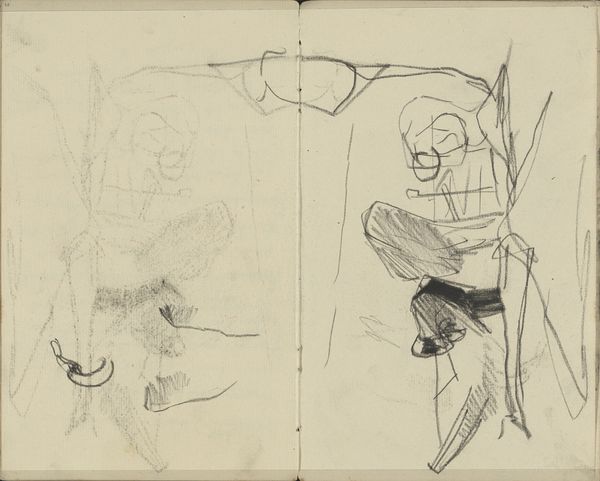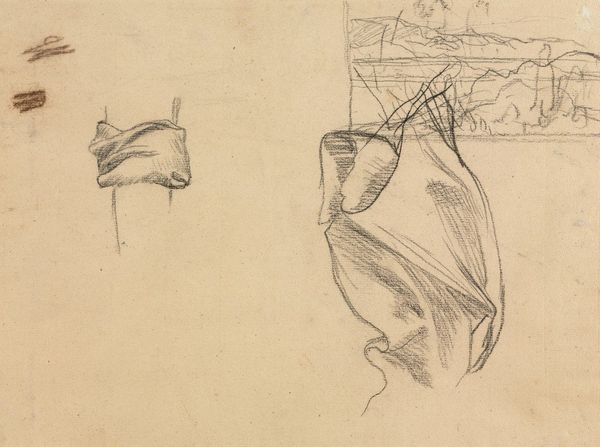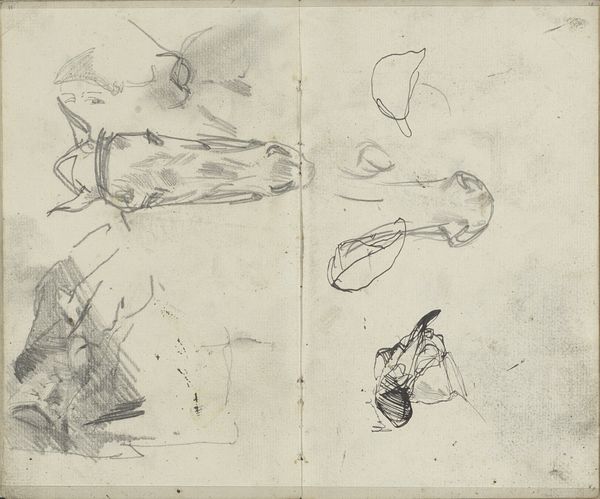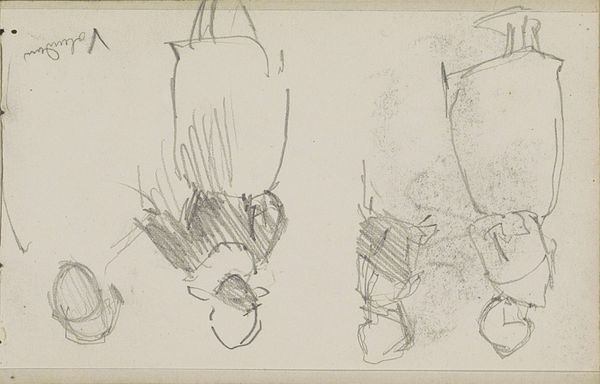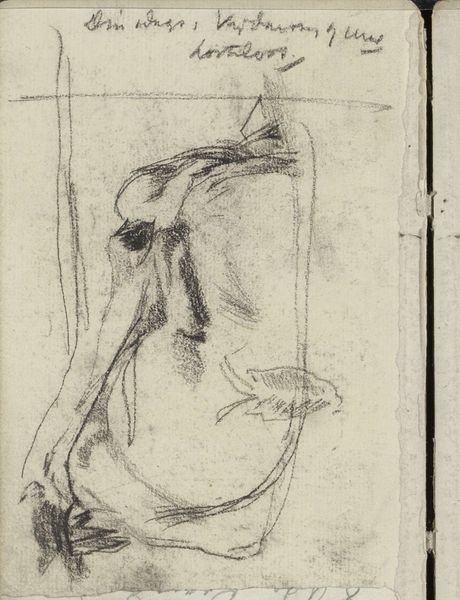
Copyright: Rijks Museum: Open Domain
Curator: Breitner’s “Woman with Hat, Seen From the Back,” made between 1893 and 1898, immediately strikes me with its provisional quality. The rapid graphite lines on paper offer us only the barest essence of the sitter. Editor: Yes, there’s a ghostly quality to it, like a fleeting memory or an impression caught mid-thought. Notice the contrasting approaches he used to define the shape on the left side of the sketchbook spread, rendering it dark, dense, and more descriptive; on the other side it is looser. It speaks volumes about the artistic process, that push and pull between intention and spontaneous creation. Curator: And in looking at the social context, we understand this as characteristic of Breitner. His artistic exploration always investigated the tensions between representation and social reality, particularly for women. Here, her identity is shielded from us, rendering her almost an object of study. But the hat also denotes status, doesn’t it? It signals a bourgeois identity and her place within a rigid class structure. Editor: Certainly. The hat, presented in the tradition of fashionable bourgeois identity markers, carries specific weight. Historically, hats have functioned as symbols of social standing, gender roles, and even personal expression, which adds depth to our reading of the image. Curator: Considering its impressionistic style, what are your thoughts on the artist choice to leave one drawing more refined, than the other? Does that hold a mirror to society? Does it have to do with gender expression? Is it a simple style? Editor: Interesting! Those visual signifiers might represent an idea or concept, it seems he is experimenting with the psychological implications of visibility and concealment, playing with how identity is constructed and perceived through both individual choices, as well as societal constraints. Curator: Considering our society today and where we’ve come regarding class and gender norms, one has to reflect on how far we’ve come as humans; this work gives us space to have such necessary discussion. Editor: Precisely. It acts as a visual bridge connecting the cultural landscape of the late 19th century with present-day dialogues about identity.
Comments
No comments
Be the first to comment and join the conversation on the ultimate creative platform.
